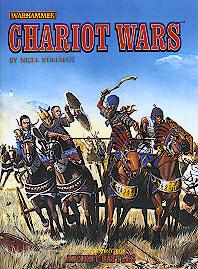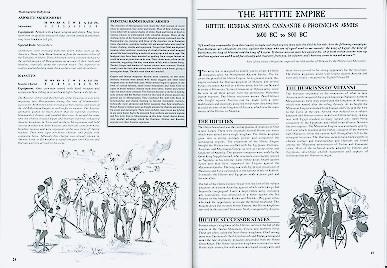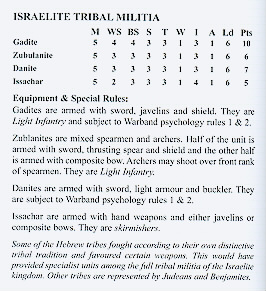
Chariot Wars

- Description
- Detailed Description
- Reviews
Back to ANCIENT BATTLES SUPPLEMENTS

This supplement is chiefly composed of seven articles, providing background and game statistics for:
| Sumer and Akkad | Covers the period from the earliest known wars of the Sumerian citystates until the fall of the Ur Empire. Includes the period of the Akkadian Empire. | 2500 B.C. to 1800 B.C. |
|---|---|---|
| New Kingdom Egyptian | Covers the 18th, 19th and 20th Dynasties of Egypt. | 1600 B.C. to 800 B.C. |
| Hammurabic Babylonia | The army of Hammurabi of Babylon, or his rivals - Assyria, Mari, Aleppo, and Larsa. | 2000 B.C. to 1300 B.C. |
| Hittite Empire | Covers the Hittite Empire, including the subject-states of Mitanni (Hurrians) and Syria. Can also be used for armies with a core of aristocratic Maryannu chariot warriors (Canaanite, Hyksos, Phoenicians). Can serve as a basis for Neo-Hittites "...with a little modification and ingenuity..." | 1600 B.C. to 800 B.C. |
| Trojan War | Covers the Greek Bronze Age from the rise of the Minoan maritime empire to the fall of Mycenae. Can be used for Mycenean Greek, Minoan, and Trojan armies. | 1600 B.C. to 800 B.C. |
| Israelites | Specifically covers the reigns of kings Saul, David, and Solomon, but can be used for an Israelite army from the time of Joshua through to the fall of Jerusalem to Babylon. Can also be used to create a Philistine army. | 1200 B.C. to 500 B.C. |
| Assyrian Empire | Covers the empire from the military-reforms of Tiglath-Pileser III to the Fall of Nineveh after the death of Ashurbanipal. Can "...with a little modification and ingenuity..." be used for Babylonian, Uruartian, and Elamite armies of the period. | 850 B.C. to 500 B.C. |
Each article includes:
- 1-2 pages of historical background
- 1-2 pages of chronology
- 3-6 pages of troop listings
- brief sidebars concerning military organization, painting tips, and tactical advice

The troop listings are heavily annotated with notes on the historical background and use of the various units. The notes are often longer than the statistical listing itself.
| Army List | Characters | Chariotry & Cavalry | Infantry | Allies & Mercenaries |
| Sumer and Akkad |
|
|
|
|
|---|---|---|---|---|
| New Kingdom Egyptian |
|
|
|
|
| Hammurabic Babylonia |
|
|
|
|
| Hittite Empire |
|
|
|
|
| Trojan War |
|
|
|
|
| Israelites |
|
|
|
|
| Assyrian Empire |
|
|
|
|
The author uses the New Chronology for all dates in this book, as he feels the conventional chronology "is definitely wrong." In a brief essay, he argues in favor of the new dating system, and lists major events with dates given under both conventions.
The supplement does not contain major changes or additions to the rules system, but does include "special instructions" covering:
- limitations on unit sizes
- costs to upgrade troops
- army-list entries covering more than one troop type
- throw sticks (treated same as javelins)
- new rules for characters in chariots
- new rules for chariot runners (superceding the rules in Armies of Antiquity)
In addition, the Assyrian army list includes two special rules - Terror and Highly Professional.
The central eight pages of the book are in color. The first four are a gallery of pictures of miniatures on the tabletop, with a page each dedicated to "Early Kingdoms and Empires," "Egypt - the New Kingdom," "Allies and Enemies of Egypt," and "Later Kingdoms and Empires." The following four pages provide illustrations showing the appearance of various troop types, crowding as many as 17 examples per page. The pages are respectively focused on Sumer and Akkad, New Kingdom Egyptian, Hittite Empire and Bronze-Age Greece, and the Assyrian Empire.
The book also contains a page of maps showing imperial boundaries, two large sketches showing 7th Century B.C. Assyrian and Babylonian armies deployed in the field, an essay on chariot tactics, and color illustrations of seven buildings used during this time period.